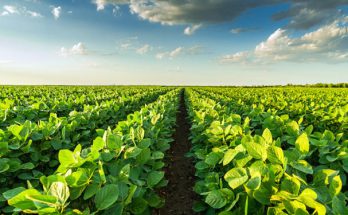 Taking into account the different levels of development of the partners, the EPA gives Botswana, Lesotho, Mozambique, Namibia, and Swaziland duty-free, quota-free access to the European market.
Taking into account the different levels of development of the partners, the EPA gives Botswana, Lesotho, Mozambique, Namibia, and Swaziland duty-free, quota-free access to the European market.
Having come into effect in October last year, the new SADC-EU EPA framework is gradually bearing fruit, as most cattle farmers are already exploiting it.
For instance, some 250 kilometres from the country’s capital city, Gaborone, there is a farm owned by Boyce Sebonego, sitting on 6,500 hectares of land.
The farm, which he runs with his father, boasts more than a thousand cattle. It has been run as a commercial enterprise for many years, which is a departure from the norm that most farms in Botswana are run on a part-time, non-professional basis.
Raising cattle has always been an important part of the culture, as it is a traditional way of expressing wealth.
However, people like Sebonego saw the need to seize the opportunities presented by the SADC-EU EPA. Most of his cows are supplied to the Botswana Meat Commission (BMC), which looks after the country’s beef exports.
Botswana exports about 9,000 tonnes of beef to the EU and 10,000 tonnes to South Africa. It enjoys unlimited preferential market access to the EU, competing with countries such as Brazil.
The EU agreement enables Botswana to export beef duty-free and quota-free to the EU. Producers like Sebonego receive 60% more than export prices to South Africa.
According to Farmer’s Weekly, the oldest agricultural magazine in South Africa, Botswana has a limited number of 220,000 cattle annually ready to be slaughtered for the domestic and export market.
“Globally, grass-fed beef production with beef without growth stimulants is constrained by the limited amount of grassland,” says Farmer’s Weekly.
This is believed to present an excellent opportunity for ranchers in Botswana to up their production efficiency in order to produce more beef for niche markets such as the EU.
Currently, only 20% of the cattle received from producers in Botswana comply with EU requirements. The government continues to encourage farmers to invest in private feedlots.
Another farmer, Billy Baaitse owns a farm sitting on 500 hectares of land at the Barolong Farms in the southern district of the country.
His farm, with three boreholes, boasts 60 stud cows. Beef is the name of the game here. Baaitse said he is now looking to expand in order to increase exports.
This fits in with the government’s aim of expanding its beef industry. Baaitse invested heavily in three boreholes to bring in the much-needed water.
The BMC sends the meat around the world, with the EU being its particularly important market.
BMC’s chief executive officer, Akanyang Tombale was once quoted as saying that preferential access to the EU should be fully exploited by Botswana’s beef producers and feedlots.
“More cattle need to be exported, with local demand being met by imports from South Africa,” he said.
Currently, the BMC is restructuring its current business operations, as it focuses on the exporting of quality beef to the EU.
Producers will be required to supply cattle that meet the minimum required cold-dressed weight (CDM) of 201kg. To achieve this, the producer needs to supply cattle of a live weight mass of 380kg. The onus will be on farmers like Baaitse and Sebonego to supply the BMC with cattle to export to the EU.



